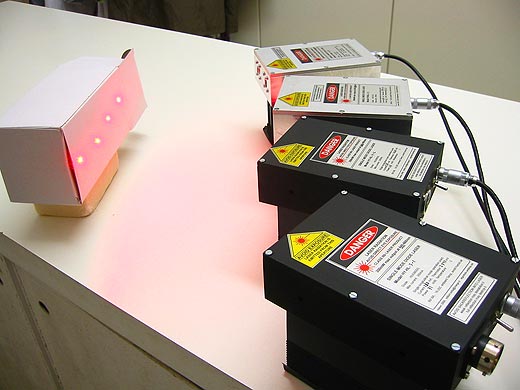
Return to sale page
Return to diode laser page
Return to home page

There are two versions as shown above, the ML version with around 40-60mW@657nm, and the HL version with around 70-80mW@640nm. So far I had problems with reliably stabilizing the HLversion heads at powers >100mW, which is because the laser diode has quite narrow single mode operating zones. So for the time being I focus on more reliable operating regions with less power.
Here a pic of two opened ML type of heads:
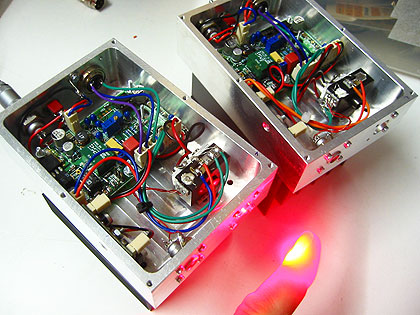
Specifications
(Electrically: as above for the driver board)
ML head:
Diode: Mitsubishi ML101J27
Single mode output power : 40...60mW
Wavelength: approx 657nm
HL head:
Diode: Opnext HL6385DG
Single mode output power : approx 70mW (100mW possible with less stability)
Wavelength: approx 640nm
Polarization: horizontal
Collimator: Roithner Lens-27
Warm up time to full power: <3min
Warm up time to stable single mode: <1/2h
Diode temperature: typ. between 13-17C
Ambient operating temperature: ca 16..25C
Weight: 1kg
Power supply: 100-240VAC --> 9V 3A
Notes:
1) Standard disclaimer: Be careful with the laser, it can ruin your eyes instantly. I refuse any responsibility.
2) Avoid back reflection into the laser -- even minimal back reflection (eg from a lens or spatial filter) can destabilize it and cause mode chaos, full back reflection may kill the diode.
3) Avoid moist air at elevated ambient temperatures, it can cause condensation on the lens which is held at approx 15C. The temperature where this happens, called the dew point, rises with air temperature and humidity. At 20C, max 70% humidity can be tolerated, and at 25C, max 50%. Check out this chart for more info.
4) Each unit has been burned in for a week or so and its mode stability has been verified throughout this time. It also comes with a 100-240VAC power supply, so the system is ready to go.
External controls and connections:
![]()
Back side:
-9V supply
-on/off switch
- 3- or 5-pin interface for external monitoring/control, connects to control header on the PCB as discussed above.
Front side:
Connector to two extra 10K thermistors, for independently checking diode and heat sink temperatures. See here for the conversion between thermistor resistance and temperature:
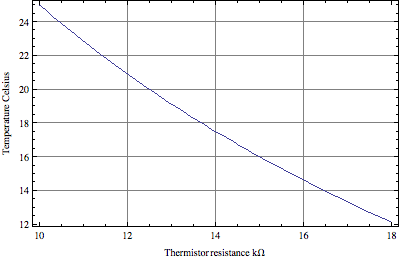
Some measurement data:
(See here how line width and noise were measured).
a) ML head at 62mW, first 200 seconds after startup show initial mode jumps in the laser noise and linewidth plots:

The subsequent hours show perfect mode stability:
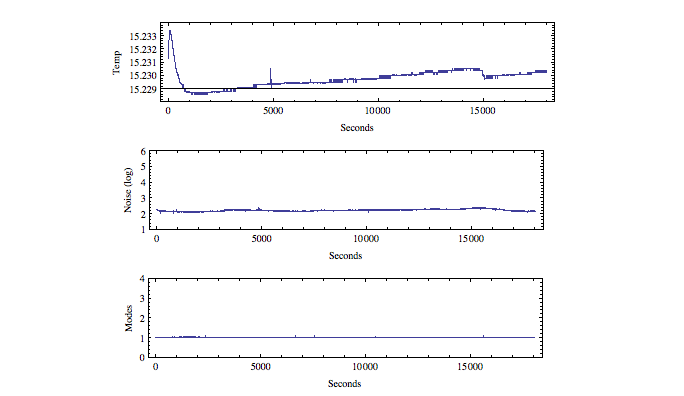
After two hours, the drift is less than 0.001C per hour. Recall that the design goal was about 0.01degrees C stability during the time of holographic exposure - so there is a lot of margin.
b) Similar for HL head at 183mA/75mW, first 1/2h:
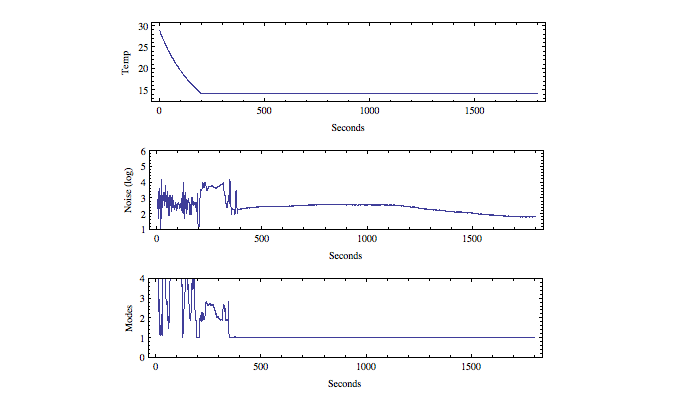
Subsequent hours:
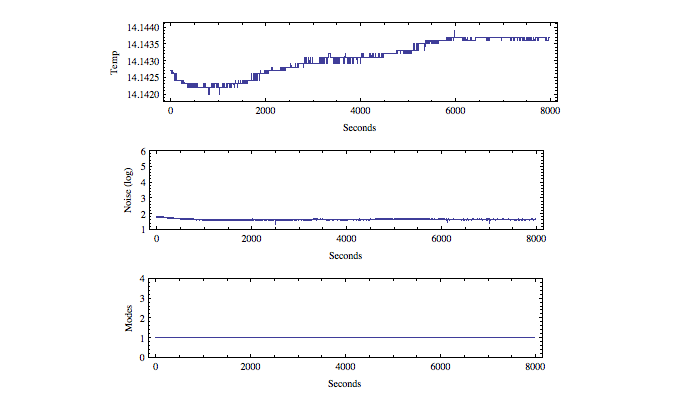
Vers 1.1 10/2009